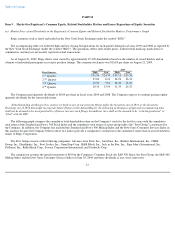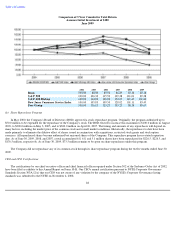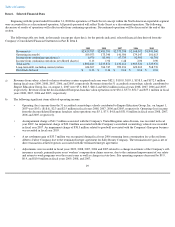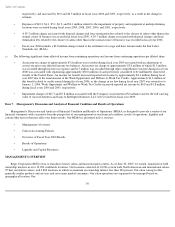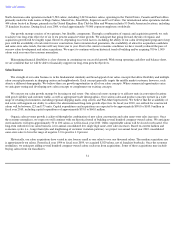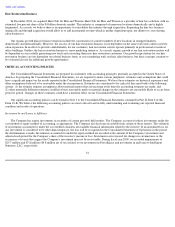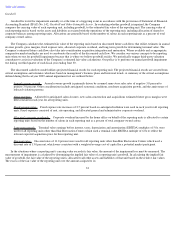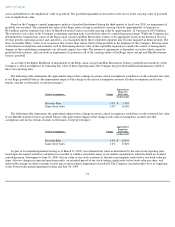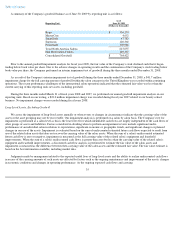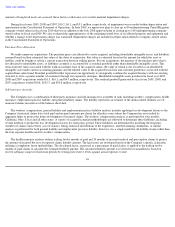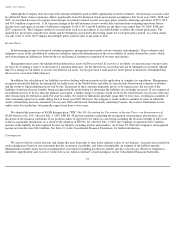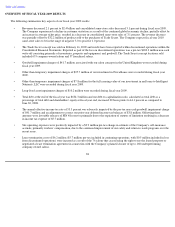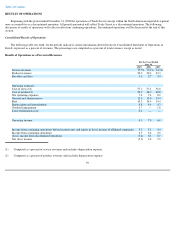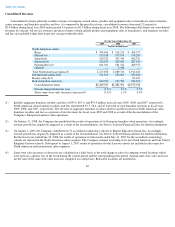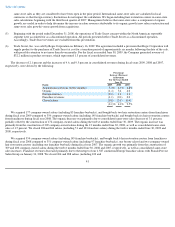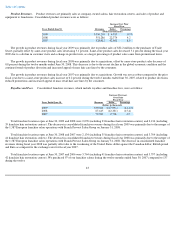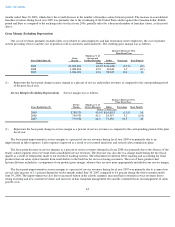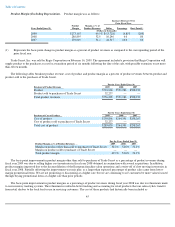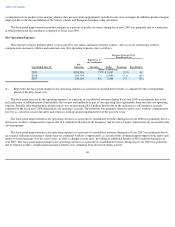Supercuts 2009 Annual Report Download - page 38
Download and view the complete annual report
Please find page 38 of the 2009 Supercuts annual report below. You can navigate through the pages in the report by either clicking on the pages listed below, or by using the keyword search tool below to find specific information within the annual report.
Table of Contents
amounts of long-lived assets are assessed, these factors could cause us to realize material impairment charges.
During fiscal years 2009, 2008 and 2007, $10.2, $6.1, and $5.1 million, respectively, of impairment was recorded within depreciation and
amortization in the Consolidated Statement of Operations. In June 2009, we approved a plan to close up to 80 underperforming United Kingdom
company-owned salons in fiscal year 2010 that was in addition to the July 2008 approved plan of closing up to 160 underperforming company-
owned salons in fiscal year2009. We also evaluated the appropriateness of the remaining useful lives of its affected property and equipment and
whether a change to the depreciation charge was warranted. Impairment charges are included in depreciation related to company-owned salons
in the Consolidated Statement of Operations.
Purchase Price Allocation
We make numerous acquisitions. The purchase prices are allocated to assets acquired, including identifiable intangible assets, and liabilities
assumed based on their estimated fair values at the dates of acquisition. Fair value is estimated based on the amount for which the asset or
liability could be bought or sold in a current transaction between willing parties. For our acquisitions, the majority of the purchase price that is
not allocated to identifiable assets, or liabilities assumed, is accounted for as residual goodwill rather than identifiable intangible assets. This
stems from the value associated with the walk-in customer base of the acquired salons, the value of which is not recorded as an identifiable
intangible asset under current accounting guidance and the limited value of the acquired leased site and customer preference associated with the
acquired hair salon brand. Residual goodwill further represents our opportunity to strategically combine the acquired business with our existing
structure to serve a greater number of customers through our expansion strategies. Identifiable intangible assets purchased in fiscal year 2009,
2008 and 2007 acquisitions totaled $1.3, $16.1, and $4.5 million, respectively. The residual goodwill generated by fiscal year 2009, 2008, and
2007 acquisitions totaled $30.8, $105.3, and $50.8 million, respectively.
Self-insurance Accruals
The Company uses a combination of third party insurance and self-insurance for a number of risks including workers' compensation, health
insurance, employment practice liability and general liability claims. The liability represents an estimate of the undiscounted ultimate cost of
uninsured claims incurred as of the balance sheet date.
The workers' compensation, general liability and employment practices liability analysis includes applying loss development factors to the
Company's historical claims data (total paid and incurred amounts per claim) for all policy years where the Company has not reached its
aggregate limits to project the future development of incurred claims. The workers' compensation analysis is performed for four models;
California, Ohio, Texas and all other states. A variety of accepted actuarial methodologies are followed to determine these liabilities, including
several methods to predict the loss development factors for each policy period. These liabilities are determined by modeling the frequency
(number of claims) and severity (cost of claims), fitting statistical distributions to the experience, and then running simulations. A similar
analysis is performed for both general liability and employment practices liability, however, it is a single model for all liability claims rather than
the four separate models used for workers' compensation.
The health insurance analysis utilizes trailing twelve months of paid and 24 months of incurred medical and prescription claims to project
the amount of incurred but not yet reported claims liability amount. The lag factors are developed based on the Company's specific claim data
utilizing a completion factor methodology. The developed factor, expressed as a percentage of paid claims, is applied to the trailing twelve
months of paid claims to calculate the estimated liability amount. The calculated liability amount is reviewed for reasonableness based on
reserve adequacy ranges for historical periods by testing prior reserve levels against actual expenses to date.
36



